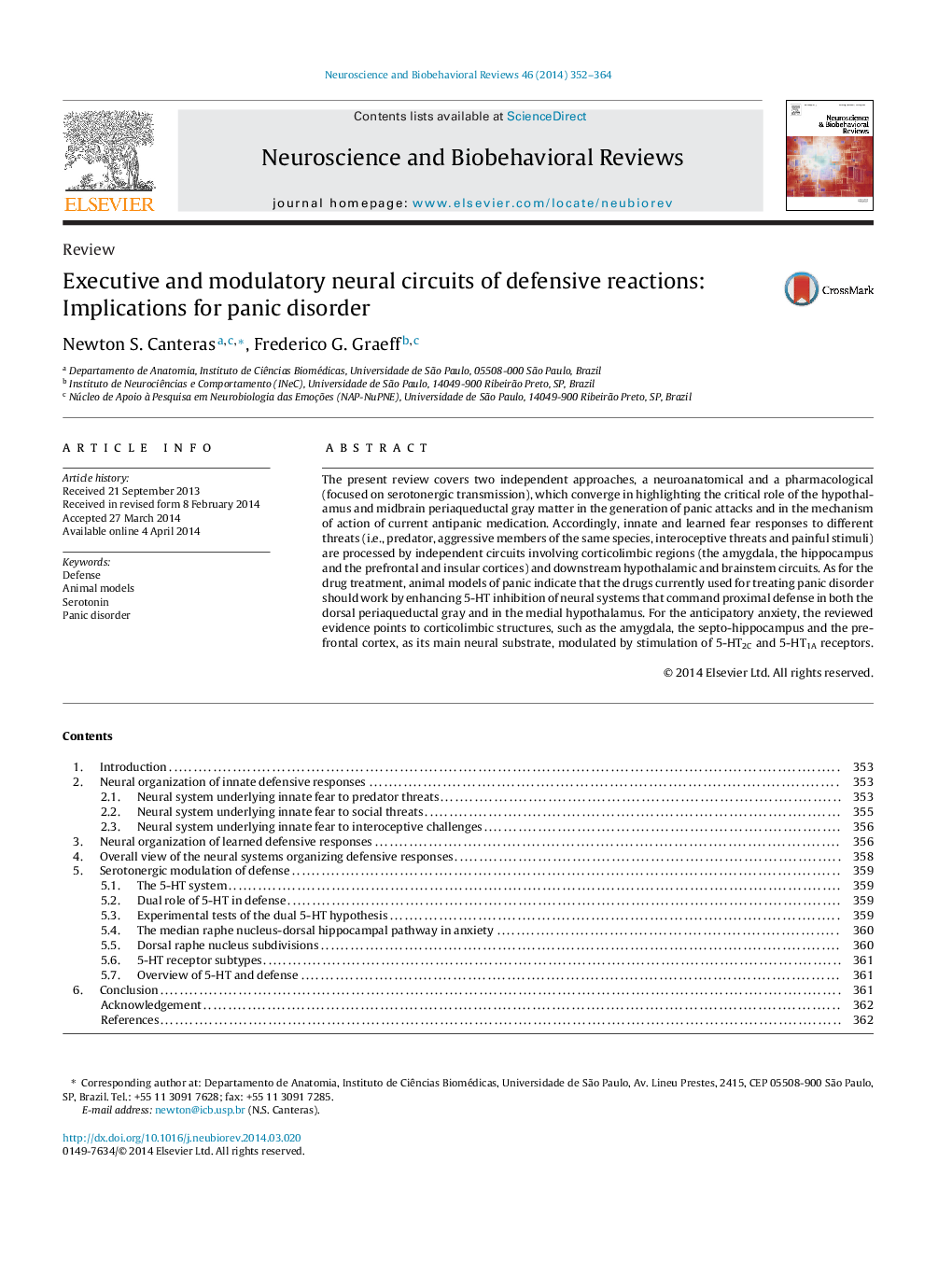| کد مقاله | کد نشریه | سال انتشار | مقاله انگلیسی | نسخه تمام متن |
|---|---|---|---|---|
| 937613 | 924522 | 2014 | 13 صفحه PDF | دانلود رایگان |
• Different threats generate fear responses processed by independent paths.
• Proximal threats (leading to panic) activate hypothalamus and PAG.
• Distal threats (leading to anxiety) activate medial PFC, amygdala and hippocampus.
• Anti-panic drugs enhance 5-HT inhibition in the dorsal PAG and medial hypothalamus.
• 5-HT receptor stimulation in corticolimbic structures favors anticipatory anxiety.
The present review covers two independent approaches, a neuroanatomical and a pharmacological (focused on serotonergic transmission), which converge in highlighting the critical role of the hypothalamus and midbrain periaqueductal gray matter in the generation of panic attacks and in the mechanism of action of current antipanic medication. Accordingly, innate and learned fear responses to different threats (i.e., predator, aggressive members of the same species, interoceptive threats and painful stimuli) are processed by independent circuits involving corticolimbic regions (the amygdala, the hippocampus and the prefrontal and insular cortices) and downstream hypothalamic and brainstem circuits. As for the drug treatment, animal models of panic indicate that the drugs currently used for treating panic disorder should work by enhancing 5-HT inhibition of neural systems that command proximal defense in both the dorsal periaqueductal gray and in the medial hypothalamus. For the anticipatory anxiety, the reviewed evidence points to corticolimbic structures, such as the amygdala, the septo-hippocampus and the prefrontal cortex, as its main neural substrate, modulated by stimulation of 5-HT2C and 5-HT1A receptors.
Journal: Neuroscience & Biobehavioral Reviews - Volume 46, Part 3, October 2014, Pages 352–364
